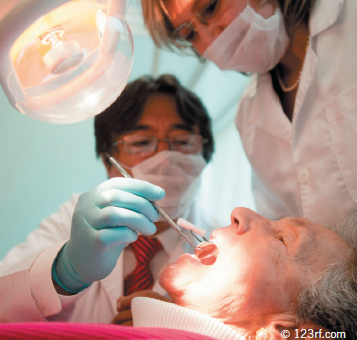The National Institute for Health and Care Excellence (NICE) has made an important change to Clinical Guideline 64 (CG64)1 adding the word ‘routinely’ to Recommendation 1.1.3: “Antibiotic prophylaxis against infective endocarditis is not recommended routinely for people undergoing dental procedures”. In a letter about the change,2 Sir Andrew Dillon, CEO of NICE, confirmed that “… in individual cases, antibiotic prophylaxis may be appropriate”.
This change followed approaches to Sir Andrew Dillon by the widow of a patient with a replacement aortic valve who died from infective endocarditis (IE) developing after unprotected dental scaling. Her case included: evidence that antibiotic prophylaxis is effective in people at high risk of IE having high-risk dental procedures;3 the observation that the incidence of IE in the UK has accelerated above the global background rise since the original 2008 NICE guidance;4 a change in the law on consent.5-7
It is now necessary for dentists to appraise their patient of the differences between NICE and other guidelines, if it is likely that they would have a special interest, for example if they have a replacement heart valve or prior IE.8 Their general practitioner or cardiologist could consider advising the patient and their dentist on the level of risk in a letter. The patient should then be allowed to make up their own mind whether or not to have antibiotic prophylaxis. General Medical Council (GMC)/General Dental Council (GDC) standards and the advice of the medical/dental defence organisations highlight the need for this discussion (and the patient’s decision) to be recorded in the clinical records.
Prophylaxis should be with amoxicillin 3 g by mouth one hour before the procedure or, for patients with penicillin hypersensitivity, clindamicin 600 mg orally. Adverse effects from oral amoxicillin prophylaxis are uncommon with no deaths reported in Europe since records began.8 Clindamicin has a slightly higher level of risk.9 Both are cost-effective in high-risk patients having high-risk dental procedures.8
Staff in general practices and specialist valve clinics should emphasise that good oral hygiene and regular dental review are as important as antibiotic prophylaxis, if not more so, in reducing the risk of IE. The European Society of Cardiology (ESC) recommend10 strict dental and cutaneous hygiene with regular dental surveillance. It is also important to educate patients at risk in recognising the possibility of IE. Typically, there may be persistent night sweats, general malaise and weight loss. At least two sets of blood cultures should be taken before starting antibiotics. The British Heart Foundation produce warning cards that can be given to patients – available at: https://www.bhf.org.uk/publications/heart-conditions/m26a-endocarditis-card
The subtle change makes NICE guidance less dogmatic and allows clinicians to use their clinical judgement, follow well-accepted international guidelines,10 and provide the care their patients want.
Summary of guidance
- People at high risk: replacement heart valves or prior endocarditis
- People at moderate risk: native valve disease
- High-risk dental procedure: extractions, root canal treatment, dental scaling and other procedures involving manipulation of the gums
- Antibiotic prophylaxis: indicated for people at high risk having high-risk dental procedures. Record details of consent process in the dental notes. Use amoxicillin 3 g or clindamicin 600 mg orally one hour before
- Other advice: dental surveillance six monthly (high-risk people) or annually (medium-risk people), avoid tattoos and intravenous drug use
- Warning: consider infective endocarditis with persistent fever or night sweats especially with systemic symptoms. Consider blood cultures before starting an antibiotic course
Conflict of interest
None declared.
References
1. National Institute for Health and Care Excellence. Prophylaxis against infective endocarditis: antimicrobial prophylaxis against infective endocarditis in adults and children undergoing interventional procedures. Clinical Guideline 64. London: NICE, July 2016. Available from: http://www.nice.org.uk/guidance/cg64/chapter/Recommendations
2. Thornhill MH, Dayer M, Lockhart PB et al. A change in the NICE guidelines on antibiotic prophylaxis. Br Dent J (in press).
3. Chambers JB, Thornhill M, Shanson D, Prendergast B. Antibiotic prophylaxis of endocarditis: a NICE mess. Lancet Infect Dis 2016;16:275–6. http://dx.doi.org/10.1016/S1473-3099(16)00048-7
4. Dayer MJ, Jones S, Prendergast B, Baddour LM, Lockhart PB, Thornhill MH. Incidence of infective endocarditis in England, 2000–13: a secular trend, interrupted time-series analysis. Lancet 2015;385:1219–28. http://dx.doi.org/10.1016/S0140-6736(14)62007-9
5. Edozien LC. UK law on consent finally embraces the prudent patient standard. BMJ 2015;350:h2877. http://dx.doi.org/10.1136/bmj.h2877
6. Main BG, Adair SR. The changing face of informed consent. Br Dent J 2015;219:325–7. http://dx.doi.org/10.1038/sj.bdj.2015.754
7. Southerland L. Montgomery in the Supreme Court: a new legal test for consent to medical treatment. Scottish Legal News March 2015. Available from: http://www.scottishlegal.com/2015/03/12/montgomery-in-the-supreme-court-a-new-legal-test-for-consent-to-medical-treatment/
8. Thornhill MH, Dayer M, Lockhart PB et al. Guidelines on prophylaxis to prevent endocarditis. Br Dent J 2016;220:51–6. http://dx.doi.org/10.1038/sj.bdj.2016.49
9. Thornhill MH, Dayer MJ, Prendergast B, Baddour LM, Jones S, Lockhart PB. Incidence and nature of adverse reactions to antibiotics used as endocarditis prophylaxis. J Antimicrob Chemother 2015;70:2382–8. http://dx.doi.org/10.1093/jac/dkv115
10. Habib G, Lancellotti P, Antunes MJ et al. 2015 ESC Guidelines for the management of infective endocarditis. Eur Heart J 2015;36:3075–128. http://dx.doi.org/10.1093/eurheartj/ehv319

